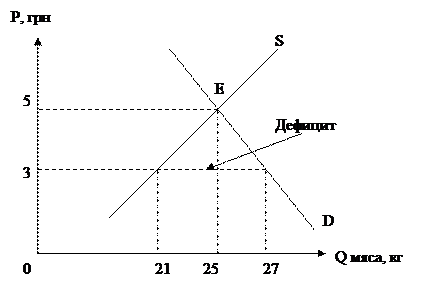SEMI-COMPOSITE SENTENCE
III. Tasks for developing creative professional skills: Teaching aid – views from TKT papers
SEMINAR #8 SIMPLE SENTENCE: CONSTITUENT AND PARADIGMATIC STRUCTURE. COMPOSITE SENTENCE AS A POLYPREDICATIVE CONSTRUCTION. COMPLEX AND COMPOUND SENTENCE. SEMI-COMPOSITE SENTENCE 1. The notion of a predicative line. The traditional classification of notional parts (members of the sentence): principal/secondary/detached. 2. The notions of surface and deep (conceptual) structures of the sentence. “Case grammar” theory of Ch. Fillmore). “Immediate constituents’. 3. Verb as the predicative centre of the sentence. The notion of the “elementary” sentence. 4. The two axes of the sentence; their correlation with complete and elliptical sentences. 5. Semantic classification of simple sentences. 6. Paradigmatic approach in syntax. The initial basic element of syntactic derivation. Derivational transformations. Clausalization and phrasalization. 7. “Lower” predicative functions and “higher” predicative functions. The notion of “predicative load”. 8. Composite sentences as polypredicative constructions. Subordinative polypredication (hypotaxis) and coordinative polypredication (parataxis). Complex/compound/cumulative/semi-composite sentences. Syndeton and asyndeton.. 9. The complex sentence as a polypredicative construction. The matrix/insert sentences. The principal/subordinate clause. Semantic types of subordinators. The zero subordinator. 10. The classification of complex sentences on the basis of subordinate clause types. Clauses of primary nominal/secondary nominal/adverbial positions. Types of attributive clauses. The subtypes of adverbial clauses. Parallel (homogeneous and heterogeneous) and consecutive subordination. 11. The compound sentence as a polypredicative construction. The leading/sequential clause. Syndetic/asyndetic connections. The types of coordinative connectors. Marked/unmarked coordinative connections. Open and closed coordinative constructions. 12. The semi-composite sentence as a polypredicative construction of fused composition. The leading (fully predicative) semi-clause and the semi-predicative expansion (the complicator). The two types of semi-composite sentences: semi-complex and semi-compound sentences. 12a. The types of semi-complex sentences. 12b. The types of semi-compound sentences.
Key terms: predicative line, monopredicative (simple sentences) and polypredicative (composite and semi-composite sentences), principal/secondary/detached notional parts, the transformational grammar theory, deep and surface structure, the theory of case grammar, elementary simple sentence, expanded/unexpanded sentences, the axes of the sentence, complete/incomplete sentences, elliptical sentence, free/fixed one-axis sentences, direct/indirect implications, categorial meanings of the subject/ predicate, personal/impersonal sentences, human/non-human sentences, process featuring (verbal) and substance featuring (nominal) sentences, actional/statal verbal predicates, factual/perceptional nominal predicates, simple/compound (verbal and nominal) predicates, subjective/objective/neutral sentences; - sentence patterns (models), syntactic derivation, kernel sentence (basic syntactic pattern, elementary sentence model, base sentence), derivational procedures (syntactic transformations), predicative relations, phrasalization, nominalization (complete and partial), clausalization, predicative functions, ‘lower’ and ‘higher’ predicative functions, predicative categories, predicatively (non-)/loaded sentences, ‘light’ and ‘heavy’ predicative load; - polypredication, composite sentence, coordination (parataxis), subordination (hypotaxis), complex sentence, compound sentence, principal/subordinate clause, syndetic and asyndetic connections, cumulative (loose, detached) polypredication, cumulative construction, semi-composite sentence; - subordination (hypotaxis), matrix/insert sentence (embedded into the matrix), principal/subordinate clause, functional types of subordinate clauses, categorial types of subordinate clauses, substantive-nominal, qualification-nominal and adverbial clauses, clauses of primary nominal/secondary nominal/adverbial positions, subordinators (subordinating clausalizers), pure conjunctions, pronominal connectors, bifunctional connectors, the zero subordinator, “descriptive”/“restrictive” (“limiting”) attributive clauses, appositive clauses, antecedent, clauses of time and clauses of place, clauses of manner and comparison, clauses of circumstantial semantics (of attendant event, condition, cause (reason), consequence (result), concession, and purpose), introductory parenthetical clauses (enclosures of modal meaning) and deviational parenthetical clauses (commenting insertions), parallel (homogeneous and heterogeneous) subordination, depth of subordination perspective - coordination (parataxis), compound sentence, leading/sequential clause, coordinative connectors, conjunctions proper, semi-functional connectors of adverbial character zero coordinator, marked and unmarked coordination, adversative relations, disjunctive relations, causal-consequential relations, positive and negative copulative relations of events, pure copulative/enumerative/broader unspecified connective relations, specifying particle-like/adverb-like words, open/closed compound constructions - semi-composite sentence, fused (blended) predicative lines, semi-predication, semi-clause, leading semi-clause, complicator, semi-complex and semi-compound sentences, the process of position-sharing (word-sharing) and the process of direct linear expansion, subject-sharing, object-sharing, double predicate, complex subject constructions, complex object constructions, attributive complication, adverbial complication (conjoint and absolute), nominal complication, semi-compound sentences of a poly-predicate subject-sharing type, semi-compound sentence of a poly-subject predicate-sharing type
Необхідна література:
|




